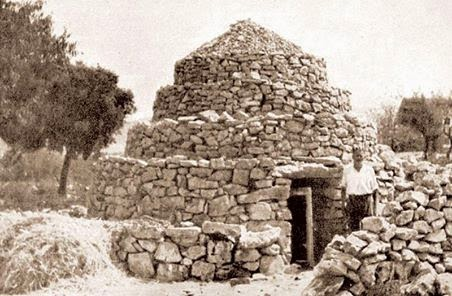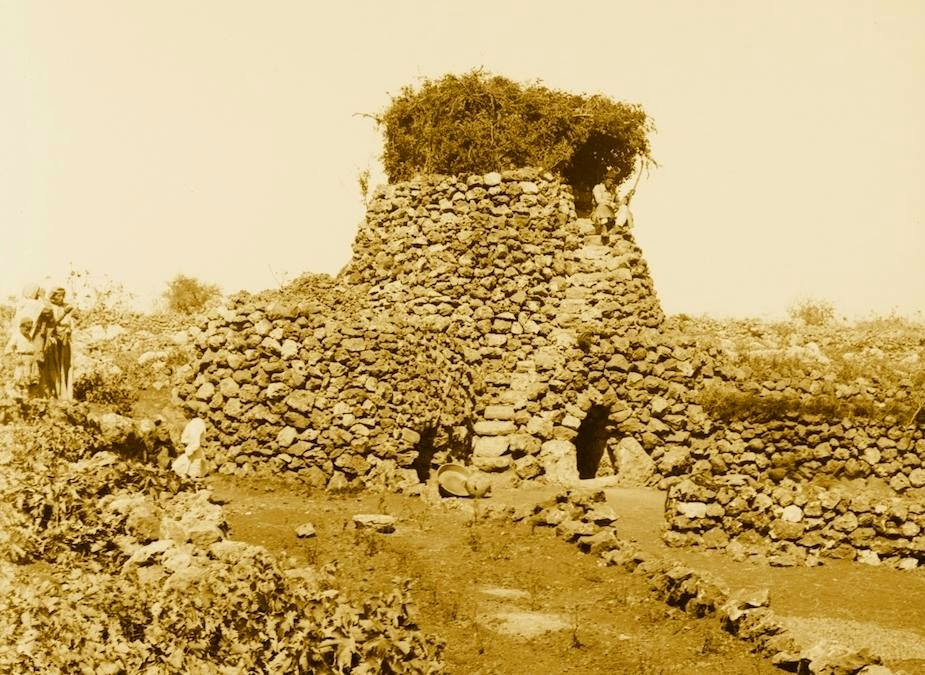Dr. Alice C. Linsley
According to one tradition Jesus was born in a migdal eder, a sheep cote. In Hebrew, a migdal (מִגְדָּל) is a “tower” and eder (עֵדֶר) refers to a herd or flock. There were many such places in the Ancient Near East. They looked like the sheep cotes in this post.
The Bible scholar Alfred Edersheim interpreted the Micah 4:8 reference to the tower as a prophecy indicating that the Messiah would be revealed from the "tower of the flock" (migdal eder) which he claimed is connected with Bethlehem.
In the Ancient Near East dry-stack sheep cotes served as housing for the shepherd. This is reflected in Judges 5:16: "Why abodest thou among the sheepfolds, to hear the bleatings of the flocks? For the divisions of Reuben there were great searchings of heart."
Sheep cotes similar to the one shown above are found in many parts of Europe and are called by different names: tholos, girna, caciara, and keyl. The last word, found in Wales, is provocatively similar to the Altaic kyr ayil, meaning a "sheep village" or "the shelter to which the ram (krios) leads the sheep."
Shepherds used sheep cotes as shelters for many centuries. In archaic times, these structures served as seasonal housing for the shepherd and his family as they moved their livestock between higher summer elevations and lower winter pastures. More recently, sheep herders maintain permanent homes in valleys and only a few men move with their flocks to the seasonal sheep cotes.
The dry stack sheep cotes pictured below are common in Ireland, Italy, Wales, Serbia and Croatia.
This practice was familiar to Jesus who said, "I am the door; if anyone enters through Me, he will be saved, and will go in and out and find pasture. The thief comes only to steal and kill and destroy; I came that they may have life and have it abundantly. I am the good shepherd; the good shepherd lays down His life for the sheep. He who is a hired hand, and not a shepherd, who is not the owner of the sheep, sees the wolf coming, and leaves the sheep and flees, and the wolf snatches them and scatters them. The man runs away because he is a hired hand and cares nothing for the sheep. I am the good shepherd; I know my sheep and my sheep know me-- even as the Father knows Me and I know the Father; and I lay down My life for the sheep." (John 10:9-15)
"After a long time Judah's wife, the daughter of Shua, died. When Judah had recovered from his grief, he went up to Timnah, to the men who were shearing his sheep, and his friend Hirah the Adullamite went with him. It was told to Tamar, "Behold, your father-in-law is going up to Timnah to shear his sheep."
Sheep shearing sometimes involved animal sacrifice and feasting on a large scale, as is evident in 2 Samuel 13:23-25.
Now it came about after two full years that Absalom had shearers in Baal-hazor, which is near Ephraim, and Absalom invited all the king's sons. Absalom came to the king and said, "Behold now, your servant has shearers; please let the king and his servants go with your servant." But the king said to Absalom, "No, my son, we should not all go, for we will be burdensome to you." Although he urged him, he would not go, but blessed him.




Are we to understand that the sheep slept inside while the shepherd slept outside? I think I read elsewhere (likely on this blog) that the low curved wall formed the corral for the animals. -Matthew
ReplyDeleteThe shepherd slept in the curved portion outside. That spot gave protection from winds and meant that predators could not get to the sheep without confronting the shepherd. That is how the shepherd is also the door.
Delete